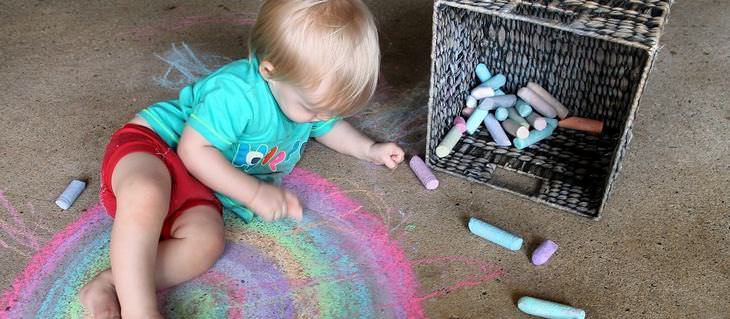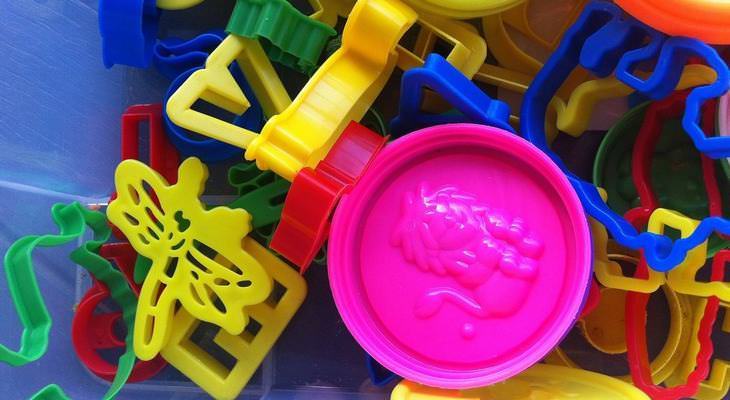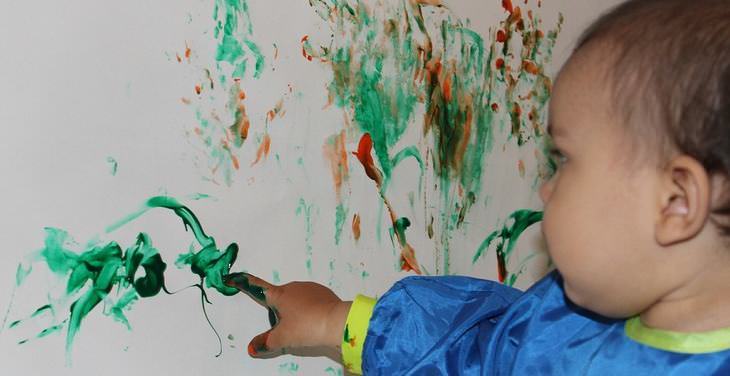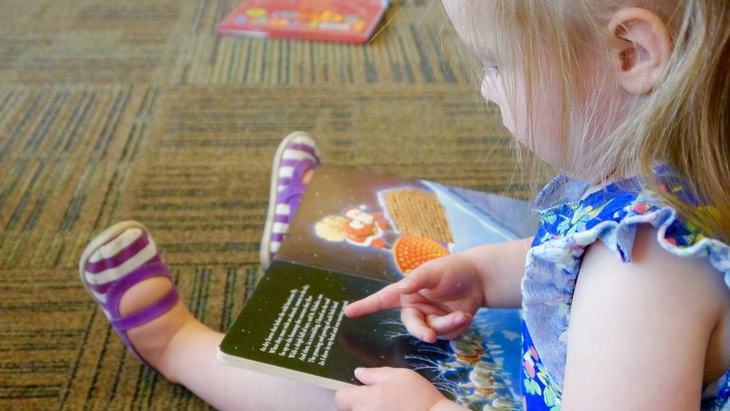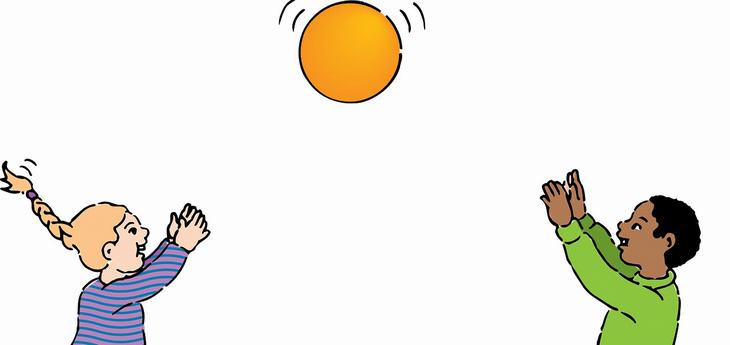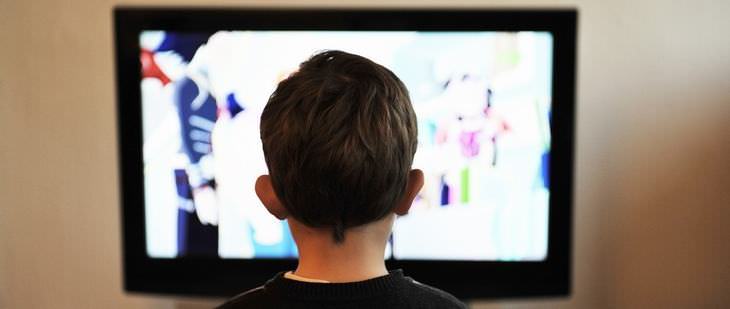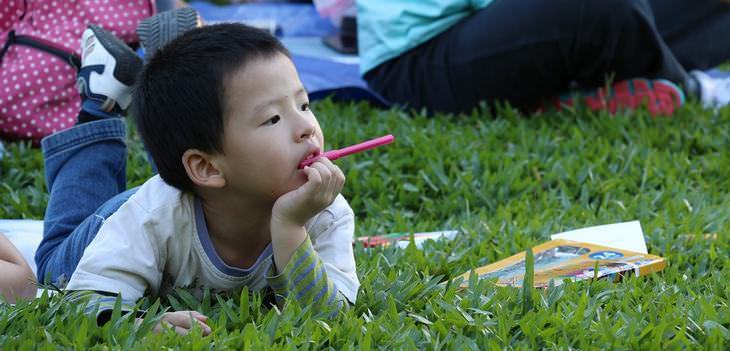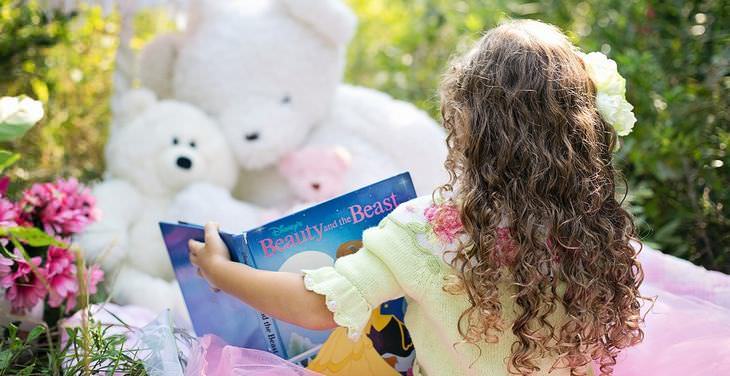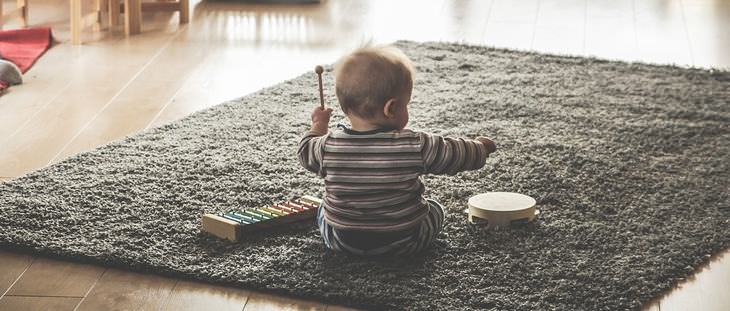1. Broken Crayon Coloring Challenge
Having to hold a tiny pencil or broken crayon forces children to learn the right way to hold a pencil, between the thumb and forefinger. You don’t need to keep replacing the coloring set with a brand new one quite so often after all!
2. Sponge Squeeze
This activity requires two bowls (one full of water, the other empty) and a large sponge. If you like, you can add food coloring or bubble bath to the water. See if the child can transfer all the water from one bowl to the next. This is a perfect game for hand and forearm strength.
3. Play dough
Play dough is a great thing to have around the house. Kids love squeezing and stretching it, which provides tremendously important finger muscle exercise. Their sense of touch is also enhanced by this wonderfully tactile activity.
4. Finger Painting
Giving children the freedom to dab their hands and fingers in colorful paints really gives them joy. It also improves their hand-eye coordination and manual dexterity. After a while they might even become as good as Picasso!
Healthy Exercise Activities
Many children in America, and other well-off countries, don't get the exercise that we used to enjoy when we were young ourselves, and this is for a variety of reasons. These exercises will help get you and your family into the happy and active habits that will remedy the problem, without breaking your back in the process!
5. Speed Read
Choose a particularly common word from a certain book. When you read the book together, tell the child to stand up and sit down every time the word is said. This quickly descends into hilarity.
6. Catch with a Catch
Whenever they toss the ball in the air, they have to do something before they catch it. First have them touch their nose, then high-five you, then high-five everyone. The idea is to make each round more difficult. You can have so much fun with a simple ball.
7. Balloon Volleyball
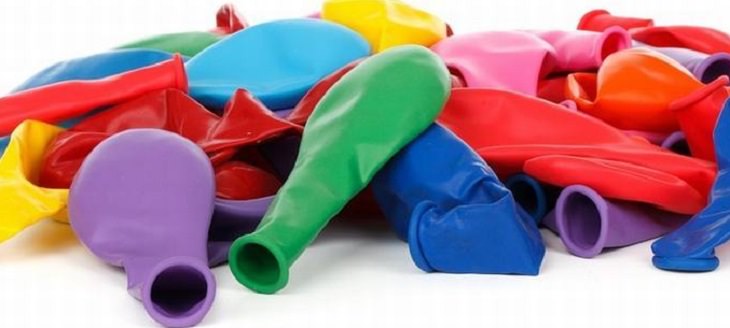
Separate a room with a line (you can make one or just use your sofa) to make a volleyball court. The child has to hit the balloon over the line, then run over and hit it back. See how many times they can run back and forth without the balloon touching the ground. This is something they can do again and again, delighting as they see their own improvement.
8. Monster Mirror
Either with yourself or a second child, have them face each other and mirror each other’s actions as if they were looking in a mirror. Tell them they must be monsters with arms and legs stretched out, making big movements.
9. ABC Body Shaping
While you and they slowly (at first) recite the alphabet, have them make the corresponding letter shapes with their bodies (as in the YMCA dance). First try A-G, then H-N, and so on. See how fast they can go.
Fun Social Skill Building Activities
It’s not enough to simply expect children to say please and thank you. They have heard that a million times already. Rather, they need to understand how to communicate effectively by exercising their speaking and listening skills. It turns out that this can be very good fun indeed!
10. Staring Contest
Making eye contact is very important in building relationships, so a good way to practice this habit is through staring contests. Lose a few rounds to make them confident. Over time, you will notice them looking people in the eye more frequently.
11. Emotional Charades
Instead of using movie titles and things like that, fill a hat full of emotional suggestions, such as 'Happy'. After they choose one of the suggestions out of the hat, they have to act out or draw a picture of someone with that emotion. Playing this game will increase their emotional understanding and awareness, filling them with empathy.
12. ABC Topic Game
Kids often switch from one topic to another, which makes them very hard to listen to. To get them out of this habit, play the ABC topic game. Starting with A, they have to say a word pertaining to a given topic, such as fruit - 'apple'. Then you return with B, 'banana'. Then they might say C, 'cucumber', and so on. This will enrich their active vocabulary and help them stay on topic.
13. TV Narration
Switch the TV on and mute the sound, then blindfold yourself or look away from the TV. Now have the child narrate to you what is happening on the TV program. Feel free to ask questions, going through the list: who, what, where, when, why, how etc. Eventually they will get so good at it that they won’t need to hear your questions, they will automatically tell you. Thus they will learn about how to inform people.
Artistic Creativity
With artistic play, you can build kids’ short term memory and imagination, boost their decision-making and problem-solving abilities, increase their ability to distinguish between things, and develop their listening, reading and vocabulary skills.
14. Toddler Dancing
Develop a little dance with a few different moves in a sequence with a toddler. This will build short term memory skills and heighten their body awareness.
15. Shoebox Dancing
For this dance, have the kid imagine their shoes are crazy. At one point they can be ice skates, then covered in gum, winged etc. Just see what funny moves they will pull. This activity encourages their imagination’s development, helping them see the world from differing angles.
16. Macaroni Mosaics
Give your children a task to be seen through to the end. Take some raw pasta and food coloring and have them make picture frames. If they can learn to stay focused, it will be a great boost to their math ability, reading skills and problem-solving.
17. Life-Size Portrait
Have the child lay down face up on a large sheet of paper. Trace around their body. Then tell them they should fill in the details of the silhouette. Offer them a mirror and see how they try to draw themselves accurately. This activity helps observation skills and improves the ability to discriminate.
18. Photo-Album Play
Have a look at your old photo albums together. Suggest they try to act out what was happening in the pictures. Tell them to think about the full sensory experience. What did it sound like, look like, taste like etc. This will give them a greater appreciation of words’ meanings.
19. Dramatize at Story Time
Rather than simply reading their favorite stories, encourage them to act them out. If they know the story by heart (and you do too) you can even play it out with them like a pair of actors.
20. Song Altering

For young kids, this song activity is something that seems small, but makes a big difference. If they know a particular tune, such as See-Saw, or Twinkle-Twinkle, adapt the song with words they know already, including their name. This helps build their memory while cultivating their listening skills.
21. Song Comparison Chat
For an older kid, get them into music by playing two completely different pieces of music for them to talk about. For example, Bach and Elvis. They can talk about tempo, instruments, rhythm etc. This will really help them appreciate music, which is considered very useful for our math and reading skills.
Content Sources:
a;
b;
c;
d

